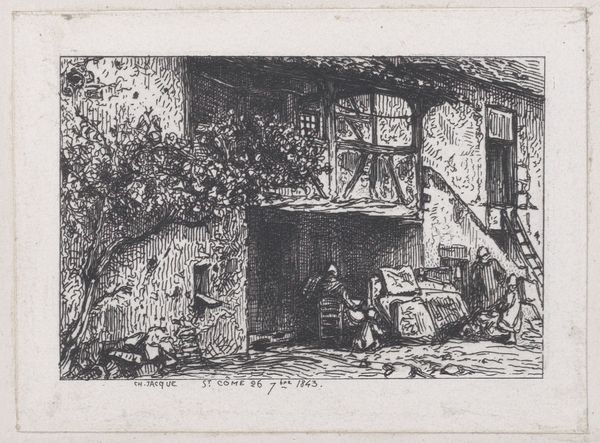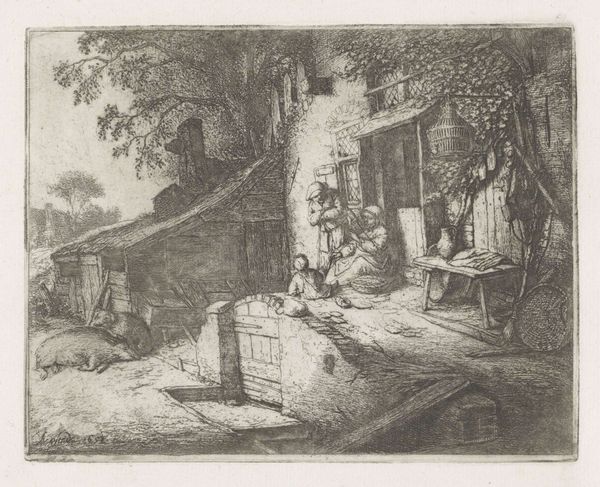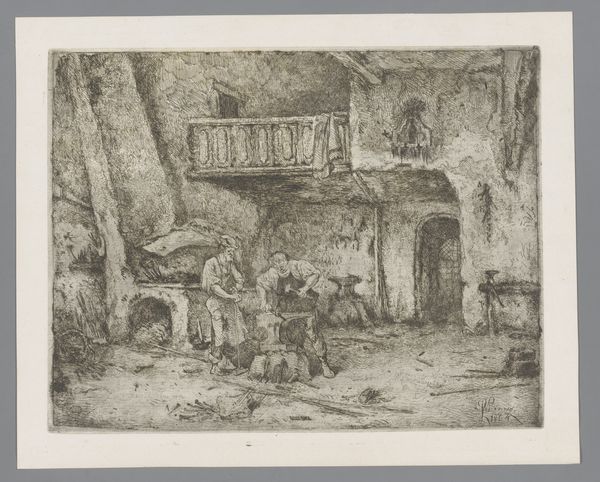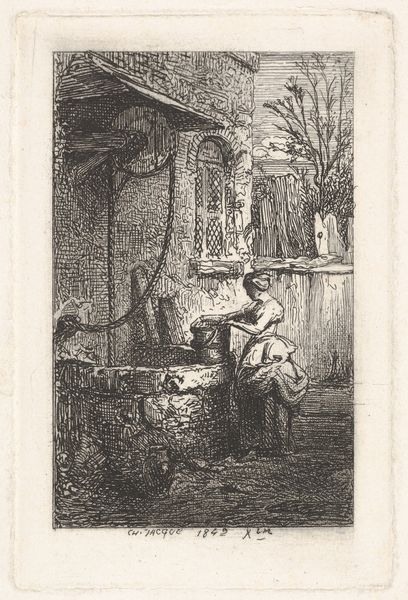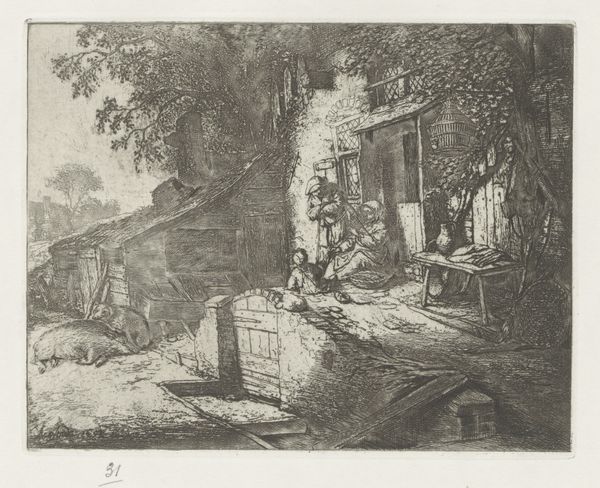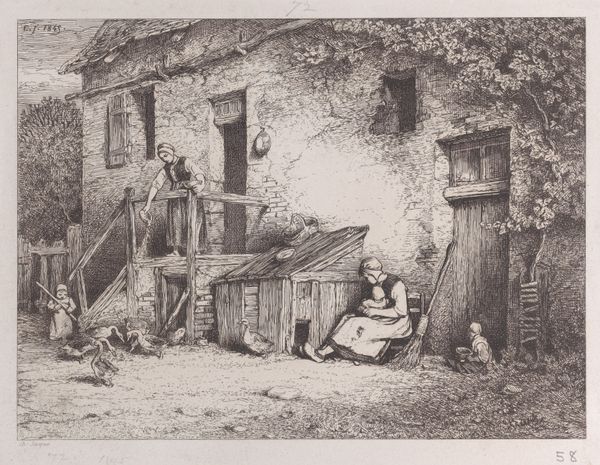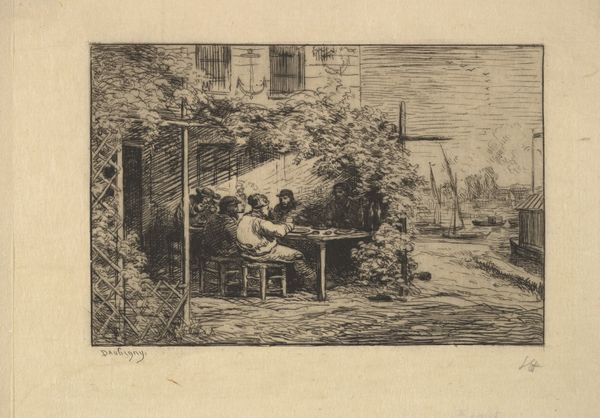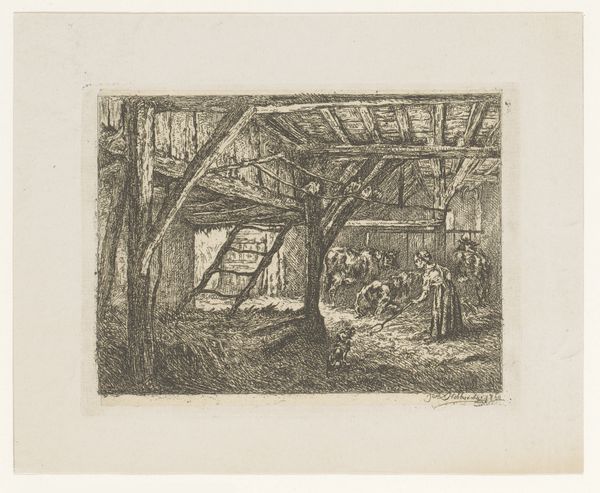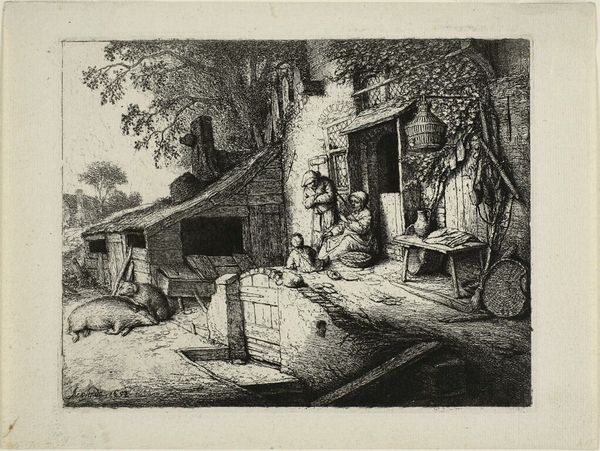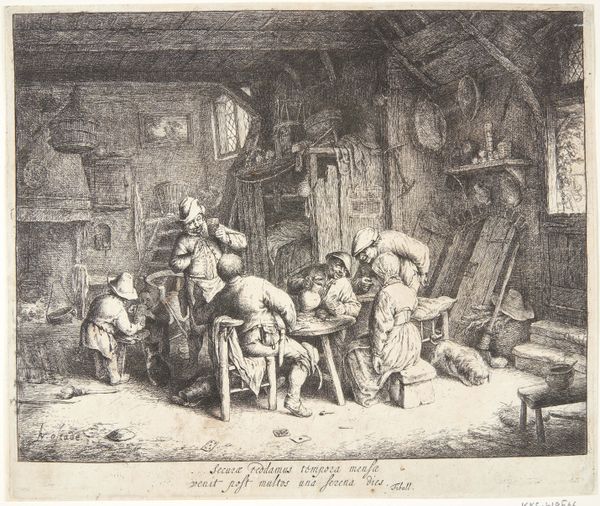
drawing, print, etching, ink, pencil
#
drawing
#
ink drawing
#
pen drawing
# print
#
etching
#
pencil sketch
#
landscape
#
ink
#
romanticism
#
pencil
#
genre-painting
#
realism
Dimensions: 2 1/16 × 3 in. (5.24 × 7.62 cm) (sheet)
Copyright: Public Domain
Curator: Looking at "Stairway in Front of a House" by Charles-Émile Jacque, made in 1843, what's your initial impression? It's rendered in ink, etching, and pencil. Editor: A bit somber. The light is muted, and even though there are figures present, they feel isolated, almost like phantoms in a dream. There's a certain melancholy woven into those lines. Curator: That's interesting. Jacque produced this during a period of significant social upheaval in France, moving from Romanticism to Realism in art. Consider the rise of industrialization and its impact on rural life. Do you think this artwork reflects that tension? Editor: Absolutely. The crumbling facade of the house, contrasted with the ladder leading up, could symbolize a society grappling with progress while simultaneously facing decay. Stairways, threshold spaces--these always represent transition. It makes you consider their psychological place during these transitional times. Curator: Precisely. And note the details—the figures engaged in everyday tasks: is that mending or selling going on in front of the house? These are not grand historical figures, but common people, captured with an unromantic honesty. This speaks to Realism's departure from idealized depictions. Editor: The density of the lines forming shadows evokes a sense of mystery as well, as if they're guarding unspoken truths, even secrets. It also looks like the texture on the walls around the buildings might echo ideas about a more turbulent society. What do you suppose? Curator: An insightful parallel. The artist's earlier works reflect the Romantic influence, showing highly stylized bucolic imagery, whereas here, the scene possesses a raw, almost journalistic quality. The artwork serves as an early type of social documentation through visual means. We begin to see hints of Realism in his changing style as a witness to change, and not simply replaying academic themes. Editor: So this movement into realism marked more of a return to traditional ways and the comfort found in the old society as he experienced the new turbulent and transitory world? Curator: You know, perhaps... I initially took it as his sombering expression over lost tradition... But as the artwork moves into new traditions it makes a fascinating intersection. Food for thought! Editor: Indeed! Thank you.
Comments
No comments
Be the first to comment and join the conversation on the ultimate creative platform.
